SeaQuest Dive Center, PhilippinesContents of this Issue: SeaQuest Dive Center, Philippines Decongestants and DCS: No Link, So Far The Right Way to Store Your Wetsuit DEPP: Guilty of Insurance Fraud Feds Seize Jean-Michel Cousteau’s Boat Spearfishing and Fish Collecting Limited in Hawaii -- Will It Help? Galapagos Aggressor I Runs Aground Subscribers Speak up about Shark Feeding New Research: Shark Feeding May Not Affect Behavior Underwater Photography for Compact Camera Users Editorial Office: Ben Davison Publisher and Editor Undercurrent 3020 Bridgeway, Suite 102 Sausalito, CA 94965 a four-resort, 10-day dive “Seafari” for $150 a day from the August, 2013 issue of Undercurrent
Dear Fellow Diver: Every time I'm on a terrific tropical dive, the tune "Octopus's Garden" runs through my head. In fact, after a week in the Central Philippines, I felt I should be paying royalties to Ringo Starr. This was my second trip to the Philippines, which still remains one of the best diving bargains anywhere. The first (reported in Undercurrent's September 2006 issue) was to sister resorts in Puerto Galera, on the eastern shore of the island of Mindoro, and Dumaguete, a little farther south on Negros Island. This time, SeaQuest Dive Center put together a dive Seafari for my scuba club. Departing from the island of Cebu (where SeaQuest is based), we visited four resorts in the central Visayan Islands during 10 days in June.
My regulator, with a DIN adaptor, and BCD were already set up on an 80 cu-ft. aluminum tank. A crew member helped me gear up, then walked me to the bow for a giant stride entry. We descended in two groups, each with its own guide, but promptly managed to get jumbled together on the reef, among profuse but muted corals. Using a pointer, our guide, Sino, pointed out a variety of anemonefish, the first in a wide variety of sea hares I would see, and four-foot hawksbill turtles, their shells clean thanks to attending remoras. I saw no sharks during my 17 dives, so the remoras evidently have opted for turtles as their hosts. I'd been instructed to signal my guide when I reached 500 psi (50 bar for those using metric gauges). But in reality, the divemasters began moving us upward from 66 feet to safetystop depth well before anyone's tank got low. However, those with stingy air consumption were free to putter around on the shallow reef top.
My itinerary included two-night stays at Sumisid Lodge, Apo Island Beach Resort, Coco Grove on Sequijor Island, and Oasis Resort at Bohol, back on Cebu. The digs ranged from Survivor-style (Apo) to outright luxurious (Coco Grove). When I first considered this trip, I was put off by the hassle of traveling to four different locations in 10 days, but SeaQuest handled all our transfers -- in fact, the entire trip -- seamlessly. Each resort was prepared for our arrival and had welcoming ceremonies for our group. Since we all enjoyed each other's company, the traveling actually became part of the fun, but not always comfy. Although we made some overland journeys of two to three hours between resorts in air-conditioned vans, most of our travel was aboard the Hagabat, with its Spartan amenities. The single marine head had no seat, and there was a bucket of saltwater for flushing. Toilet paper typically ran out before reaching our next destination. Lunches, packed by the resorts, tended to get soggy in coolers filled with ice. But in late May, our crossings were smooth, and the sea breezes helped relieve the muggy 90-degree heat. And the diving was spectacular throughout, with a few highlights -- and some lowlights, too. Sumisid Lodge, a SeaQuest property in Maolboal, is rustic but comfortable. We reached it after a jangly, three hour, cross-island drive, and were greeted with cool drinks by attractive young staffers who promptly memorized our names. Following a buffet lunch of stir-fried seafood and vegetables, served in an open-air reception area with tile floors and woven wall coverings, I made my way to the adjacent dive center, right off the beach. Most of my group of 12, who preferred to travel light, were renting various gear which we had reserved in advance via e-mail. Our Seafari host, a Dutch expat named Sander, helped set up the new Cressi computers and described how to use them. On subsequent dives at Sumisid and elsewhere, I typically drifted slowly along walls close to shore. My depth averaged 70 feet, with bottom times in the 55-minute range (longer for some women and photographers in our group). Visibility was about 75 feet, and the water 86 degrees, ultimately too warm for my rented 3-mil full suit, so I soon stripped down to a rash guard. (Not long ago, they were called "dive skins." I suppose by reinventing them as "rash guards," manufacturers added perceived value for the wary diver; after all, who wants a rash?). The marine preserves were dotted with mooring buoys, so we didn't have to anchor in the coral. But at a site called Talisay (named after a tree on shore), I saw old and new mooring lines chafing the reef. There was so much trash in the shallows, I gave up trying to collect it all. It was hard to believe I was paying a marine reserve fee of 100 pesos a day (about $2.30 U.S.) and still encountering so much garbage. But the fish and critters paid no heed -- for the most part. Besides the usual lionfish, scorpionfish and pygmy seahorses, I also spotted a huge variety of sea hares, including two-foot horned monsters, sea cucumbers and white, wormy-looking critters clinging to the reef substrate. After diving, I got a beer at Sumisid Lodge for about a buck, then strolled over for a $7 massage under a spreading Talisay tree, eventually joining the group cocktail hour, where we entertained ourselves by watching silent heat lightning on the horizon. (For a diversion, one can also stroll down the unpaved street that connects a string of budget resorts and dive shops -- a very downscale version of bustling Puerto Galera). My small room at Sumisid had all the basic amenities, including freshly ironed sheets each night. When I turned out the lights, the fan over my bed shut down, but the air conditioning stayed on, so I could sleep. Breakfasts at Sumisud and the other three resorts were Western-style, with pancakes (which the Filipinos roll like crêpes), eggs fried or scrambled, sausage or bacon, cereal, and fruit juices (some from local fruits like mangoes). Lunches and dinners typically featured buffets of stir-fried concoctions with meat, chicken or fish with vegetables, and fruit for dessert. I made two more dives at Sumisid. Off the nearby Pescador Island, I met a phalanx of cornet fish, while the surface overhead was darkened by clouds of sardines. The reefs were the most colorful yet, but most of this early-morning dive was in shadows. At Tongo Point, we moored in water so shallow it was difficult to do a giant stride without crunching corals. Sino pointed out an electric file clam, with a red mantle edged in iridescent blue, which looked like it was giving off electric impulses. The night dive was under the Hagabat, moored in shallow water just offshore, so I skipped it (and subsequently got the impression that I didn't miss anything). Because it started late and would delay dinner, I went out in search of corn chips and ice cream. The benefits of traveling with good friends made such minor inconveniences easier to take. If you take this trip on your own, note that SeaQuest and the resorts it visits cater to Europeans (primarily German and Dutch, as evidenced by books in the library). I've been in Pacific resorts where my buddy and I were the only Yanks, and although people are cordial, it can become a lonely experience if the other travelers stick to their native tongues. Our next stop was at the Philippines'signature dive site: Apo Island. I had made a day trip to Apo from Dumuguete seven years earlier, and was eagerly awaiting my return. The walls at Apo are a tossed salad of corals, sponges, anemones and other colorful tidbits. In two days of diving, I saw every imaginable hard and soft coral, and some unimaginable ones, such as mushroom corals, which reminded me of oversized artichoke hearts before the spiky caps are removed. Feather stars and sea fans wafted in the currents as I drifted by. Blue linkia stars, some with one-foot arm spans, clung tenaciously to the reef. In two days, we dived all seven sites on Apo's lee side (a marine sanctuary on the windward side was devastated by a typhoon several years ago). Our original dive guides had been replaced by two fellows who would complete the rest of the trip with us. Rudy was a seasoned divemaster in his 40s. The other guide was Yooly (pronounced "Julie"), who could benefit from some of Rudy's seasoning. He manhandled critters, showed poor finning technique on the reefs, and had a strange propensity for wiping his palms on coral heads. At Rock Point West, Yooly pulled a five-inch white nudibranch out of a hole and posed it for photos. Later, he folded back a carpet anemone to expose some clownfish, and dislodged a feather star while prodding a giant black frogfish from its perch. With limited English, Yooly couldn't even identify to us many of the critters he molested. However, the 85-foot visibility and the variety of pristine, colorful corals and reef fish soon took my mind off his abuses. I swam among squadrons of giant trevally, spotted a star puffer in a barrel sponge cleaning station, and watched a seven-foot banded sea snake prowling a coral head. Huge turtles appeared on every dive. One, concentrating on munching sand, proved a very patient poser for our photographers. Other than turtles, the biggest critters I saw were black snappers and groupers. Once in a while, I spied a hulking potato grouper (also called "potato cod") circling warily at a distance. But the abundance of sweetlips, butterflies, angels, parrots, gobies, damsels and other colorful reef fish made up for the lack of big stuff. Not that our dives lacked excitement.
At a site called Cogon, my heart sank when I came across a ghost net 80 feet down. Sander tried to free a struggling blue-spotted stingray with his knife, but it was too entangled (scissors would likely have been more effective). Ironically, that was the only ray I saw on the entire trip. But, one must ask, why hadn't the dive operators on the island cut up and retrieved the net before it did any more damage? Despite this tragedy, my final dive on Apo was the most memorable, as if they were saving the best for last. At Rock Point East, I finned from a bottom of dead coral to a wall that looked like a surrealistic mural shimmering in brilliant morning sun. It was like suddenly being transported from Death Valley to the Grand Canyon, and definitely left me wanting more of this world-class diving. Some day trips from Dumuguete allow for three dives at Apo; the S/Y Siren, a 130-foot, traditional gaff-rigged Phinisi built in Sulawesi, spends time here ( www.sirenfleet.com ). Apo Island Beach Resort has the potential to be a very romantic getaway, with pretty little duplex cottages on a private cove with glorious sunsets. But it's an arid island, so all fresh water must be shipped in. Because there's no running water in the rooms, they provide a tub of fresh water and a ladle for washing up. You ladle saltwater to flush the toilet. The generator provides electricity only from 6 p.m. to 1 a.m. -- just enough time to recharge batteries -- so there is no air conditioning. Two nights in what I called Boot Camp was quite enough, thank you. The resort has a small dive shop that carries rental gear and offers lessons. During surface intervals, I waded over to the nearby village to check out other accommodations and shops, but none appeared up to the quality of my resort. Lunches and dinners were served indoors, with dishes like beef chow mein, sautéed lemon chicken, rice, French fries, fritters, and salads of lettuce, tomato and onion. I waited impatiently for 6 p.m., when the blender could be switched on to whip up mango daiquiris, perhaps the major luxury on the island.
The drop-offs at Sequijor were nearly as spectacular as Apo's, but a bit sandier. Atop Paliton Wall, I spotted a pair of blue ribbon eels, a six-inch Christmas tree worm, a well-disguised scorpionfish on a ledge, and a clown trigger which seemed more inclined to amuse than attack. At a site named Maite, "cemetery" in English, Yooly terrorized a slipper lobster to keep it out of the sand while photographers snapped away. At that point I decided to switch to Rudy's group, and I'm hoping that this article, which I will send to SeaQuest, will change some behaviors. While cruising toward our final destination, Oasis Resort on Panglao Island, we stopped at another small island called Balicasag for two remarkable dives. At Black Forest, Rudy pointed out a black lionfish. I swam into a tight ball of 100-plus jacks. Later, I spotted a black unicornfish, porcupinefish, batfish and bannerfish, sergeants and sergeant majors, black-tail humbugs, five turtles, a juvenile striped catfish and a white-banded orange wrasse that looked like Nemo on a diet. After enjoying a sandwich and mango juice, I had another magnificent dive at Rico's Wall (also called Sanctuary), a sheer drop-off with vents, caverns and grottoes. Another school of jacks engulfed me, and I saw lots of cardinalfish and blue-fin trevallys, not to mention a large white frogfish perched in sea fan. Then, off to Oasis Resort on Alona Beach in Bohol, 45 minutes away. The Oasis, with wooded grounds and a pool, was a slight step down from the luxurious Coco Grove. My large room in a duplex cottage had tile floors, abstract wall hangings and patterned curtains, a writing desk and in-room instant coffee. I arranged for a mani-pedicure on beach, then met my group for poolside drinks. The next day, I chose to return to Balicasag, and was rewarded by a large pod of dolphins that played off the boat's bow. At Diver's Heaven, I watched garden eels dancing in the sand, and back at Black Forest, I encountered a silver unicornfish, two white porcelain crabs in a crevice, and more laid-back turtles. No octopus, but I could still hear Ringo singing in my head: "I'd like to be under the sea in an octopus' garden in the shade. . ." And I realized, I've been diving longer than that song has been around. On my safety stop, I kicked slowly to the edge of the wall, peering down into the dark blue abyss. Now approaching my mid-70s, I relish moments like this because -- who knows -- this might have been my last dive. If so, it would be a fitting end to a 55-year diving career. -- Larry Clinton
|

I want to get all the stories! Tell me how I can become an Undercurrent Online Member and get online access to all the articles of Undercurrent as well as thousands of first hand reports on dive operations world-wide
| Home | Online Members Area | My Account |
Login
|
Join
|
| Travel Index |
Dive Resort & Liveaboard Reviews
|
Featured Reports
|
Recent
Issues
|
Back Issues
|
|
Dive Gear
Index
|
Health/Safety Index
|
Environment & Misc.
Index
|
Seasonal Planner
|
Blogs
|
Free Articles
|
Book Picks
|
News
|
|
Special Offers
|
RSS
|
FAQ
|
About Us
|
Contact Us
|
Links
|
3020 Bridgeway, Ste 102, Sausalito, Ca 94965
All rights reserved.

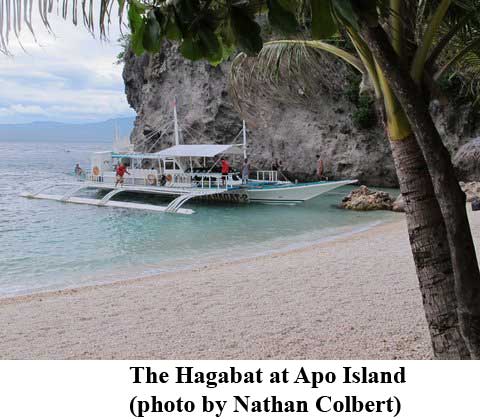 My first dive, in Maolboal (on the other side of
Cebu from the airport), set the tone for what was to
come. The crew loaded my gear on board the Hagabat "South Wind" in English, a typical Philippines bangka
with outriggers, a sunshade and bench seating. I waded
out to a small speedboat, which took us to the dive boat
moored farther out. I found my mask, fins and other personal
gear stowed in
a marked plastic bin
under a bench seat,
and took my place
for a short ride to
a site name Kasai,
a dropoff maybe 100
feet off the beach of
Sumisid Lodge.
My first dive, in Maolboal (on the other side of
Cebu from the airport), set the tone for what was to
come. The crew loaded my gear on board the Hagabat "South Wind" in English, a typical Philippines bangka
with outriggers, a sunshade and bench seating. I waded
out to a small speedboat, which took us to the dive boat
moored farther out. I found my mask, fins and other personal
gear stowed in
a marked plastic bin
under a bench seat,
and took my place
for a short ride to
a site name Kasai,
a dropoff maybe 100
feet off the beach of
Sumisid Lodge.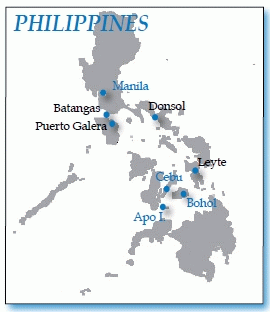 Ominously, I found a pair of cutoff shorts
draped on the corals under the boat. Although
virtually all our diving was to be in marine
preserves, I was shocked by the ocean trash I encountered at every stop along
the way -- clothing, plastics, even a gross lumpy diaper I wasn't about to pick
up. When I ascended the ladder, I handed up the cutoffs, then my weight belt,
tank rig and fins, and climbed on board. A crew member handed me a towel marked
with my name, and offered a drink of tepid water, instant coffee or tea. But no
snacks -- a shortcoming, I should say.
Ominously, I found a pair of cutoff shorts
draped on the corals under the boat. Although
virtually all our diving was to be in marine
preserves, I was shocked by the ocean trash I encountered at every stop along
the way -- clothing, plastics, even a gross lumpy diaper I wasn't about to pick
up. When I ascended the ladder, I handed up the cutoffs, then my weight belt,
tank rig and fins, and climbed on board. A crew member handed me a towel marked
with my name, and offered a drink of tepid water, instant coffee or tea. But no
snacks -- a shortcoming, I should say.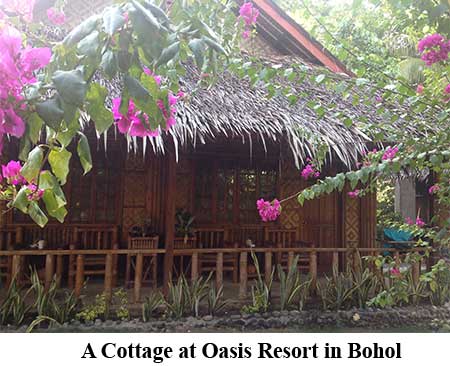 Titan triggerfish are famous for forcefully defending their nests, and several
of us experienced their ferocity firsthand. The problem was that their nests
are so well camouflaged, I didn't know I
had invaded a trigger's territory until it
began attacking. Fortunately, they generally
attack from the rear, so the first sign
of aggression is a tug on one's fins. At
that point, the best defense is to turn over
and begin kicking at the toothy attacker.
That tactic not only keeps the trigger at
bay, it propels the diver backward and eventually
out of the fish's territory. But in
one case, an agitated male chased off every
diver, not giving up until our divemaster
jabbed at him with his metal pointer, finally
forcing his retreat. Triggers can inflict
serious damage. Sander showed us a circular scar from a triggerfish bite that had taken a sizable chunk out of his calf 10
years ago. One would think that a savvy dive operator would consider the presence
of these marauders when picking sites.
Titan triggerfish are famous for forcefully defending their nests, and several
of us experienced their ferocity firsthand. The problem was that their nests
are so well camouflaged, I didn't know I
had invaded a trigger's territory until it
began attacking. Fortunately, they generally
attack from the rear, so the first sign
of aggression is a tug on one's fins. At
that point, the best defense is to turn over
and begin kicking at the toothy attacker.
That tactic not only keeps the trigger at
bay, it propels the diver backward and eventually
out of the fish's territory. But in
one case, an agitated male chased off every
diver, not giving up until our divemaster
jabbed at him with his metal pointer, finally
forcing his retreat. Triggers can inflict
serious damage. Sander showed us a circular scar from a triggerfish bite that had taken a sizable chunk out of his calf 10
years ago. One would think that a savvy dive operator would consider the presence
of these marauders when picking sites.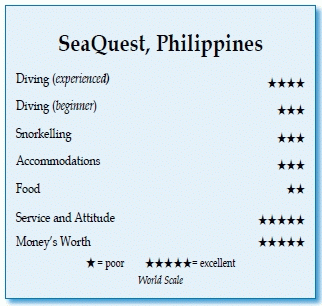 After two nights on Apo, and another
mediocre stir-fry lunch, we loaded our
luggage and boarded the Hagabat for a
two-hour ride to Coco Grove Beach Resort
on Sequijor Island, a trip from the
ridiculous to the sublime. The sprawling
resort is in a plantation setting with
coconut palms and refinished wooden farm
implements, fronted by a sugary beach.
Chickens smaller than pigeons roam the
grounds. Coco Grove sports two pools
with bars, two restaurants, and lots of
non-diving activities. I was delighted
with my sizable air-conditioned room
with satellite TV. After a swim and a
shower, I did a little laundry and headed
to the reception area for a Wi-Fi
connection. A lovely thunderstorm serenaded
me to sleep around 10:30.
After two nights on Apo, and another
mediocre stir-fry lunch, we loaded our
luggage and boarded the Hagabat for a
two-hour ride to Coco Grove Beach Resort
on Sequijor Island, a trip from the
ridiculous to the sublime. The sprawling
resort is in a plantation setting with
coconut palms and refinished wooden farm
implements, fronted by a sugary beach.
Chickens smaller than pigeons roam the
grounds. Coco Grove sports two pools
with bars, two restaurants, and lots of
non-diving activities. I was delighted
with my sizable air-conditioned room
with satellite TV. After a swim and a
shower, I did a little laundry and headed
to the reception area for a Wi-Fi
connection. A lovely thunderstorm serenaded
me to sleep around 10:30.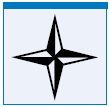 Divers Compass: I flew Philippines Air (PR) direct from San
Francisco to Manila, with an easy, same-terminal transfer to
a domestic PR flight to Cebu ($1,636, including a $40 travel
agent fee); those who changed airlines in Manila had to take
long shuttle rides between international and domestic terminals
. . . My SeaQuest Seafari dive-group package, which included 18
dives, most meals and all transfers, cost me $1,410 for a single
supplement, and I was told tipping was unnecessary . . . For
those not in a dive group, SeaQuest currently offers two Dive
Seafaris, one for 12 days and 22 dives at Cebu, Malapascua Island and Leyte for
$2,250, double occupancy; the shorter 5-day, 13-dive trip to Cebu and Siquijor
is $700, double occupancy . . . Although bugs came out at night, their bites
were mild and the itch didn't last; our Seafari didn't take us into malaria
zones, but some folks who had made side trips before the Philippines had
opted for malaria prophylaxis . . . There's a recompression chamber at Viscom
Station Hospital, in the Lahug district of Cebu City . . . Websites: SeaQuest
and Sumisid Lodge -
Divers Compass: I flew Philippines Air (PR) direct from San
Francisco to Manila, with an easy, same-terminal transfer to
a domestic PR flight to Cebu ($1,636, including a $40 travel
agent fee); those who changed airlines in Manila had to take
long shuttle rides between international and domestic terminals
. . . My SeaQuest Seafari dive-group package, which included 18
dives, most meals and all transfers, cost me $1,410 for a single
supplement, and I was told tipping was unnecessary . . . For
those not in a dive group, SeaQuest currently offers two Dive
Seafaris, one for 12 days and 22 dives at Cebu, Malapascua Island and Leyte for
$2,250, double occupancy; the shorter 5-day, 13-dive trip to Cebu and Siquijor
is $700, double occupancy . . . Although bugs came out at night, their bites
were mild and the itch didn't last; our Seafari didn't take us into malaria
zones, but some folks who had made side trips before the Philippines had
opted for malaria prophylaxis . . . There's a recompression chamber at Viscom
Station Hospital, in the Lahug district of Cebu City . . . Websites: SeaQuest
and Sumisid Lodge - 